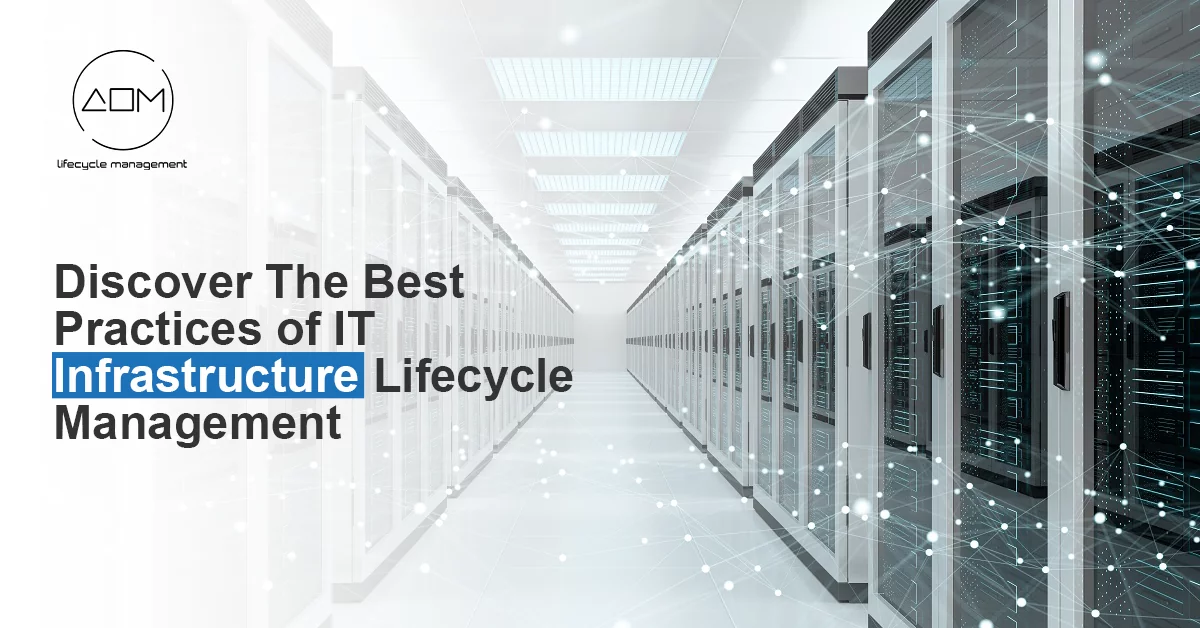
In today’s technology-driven world, organizations heavily rely on robust IT infrastructures to support their operations. The management of IT infrastructure throughout its lifecycle plays a crucial role in ensuring efficiency, security, and adaptability. This article highlights best practices for IT Infrastructure Lifecycle Management (ILM) that can help organizations optimize their resources, minimize risks, and align technology investments with business goals.
Define Clear Objectives and Requirements:

Before implementing any IT infrastructure, it is vital to establish clear objectives and requirements. Engage key stakeholders to understand their needs, align IT goals with business objectives, and identify critical success factors. This ensures that the infrastructure design meets present and future demands.
Comprehensive Planning and Design:

Invest sufficient time and effort into the planning and design phase of the IT infrastructure. Consider factors such as scalability, redundancy, security, and interoperability. Develop a comprehensive architecture that aligns with industry best practices and allows for future growth and technological advancements.
Standardization and Documentation:

Standardization is crucial for efficient IT infrastructure management. Establish and enforce standardized configurations, naming conventions, and documentation practices. This facilitates easier troubleshooting, reduces errors, and simplifies maintenance and upgrades.
Robust Change Management Processes:
Effective change management minimizes disruptions and ensures smooth transitions during infrastructure updates or upgrades. Implement well-defined change management processes that include thorough testing, rollback plans, and stakeholder communication. Document and track all changes to maintain a clear audit trail.
Regular Maintenance and Monitoring:
Maintaining a healthy IT infrastructure requires proactive monitoring and regular hardware maintenance services maintenance. Implement monitoring tools to track system performance, identify bottlenecks, and anticipate failures. Regularly update and patch software, firmware, and security systems to mitigate vulnerabilities and ensure optimal performance.
IT Asset Management:

Efficient IT asset management services are a crucial aspect of IT Infrastructure Lifecycle Management. Maintain an accurate inventory of hardware and software assets, including licensing details and support contracts. Regularly assess the usefulness and relevance of assets, retire obsolete components, and plan for technology refresh cycles.
Data Backup and Disaster Recovery:
Implement a robust data backup and disaster recovery strategy to safeguard critical information. Regularly back up data, test the restoration process, and store backups in secure offsite locations. Develop a disaster recovery plan that outlines roles, responsibilities, and procedures for responding to emergencies.
Security and Compliance:

Ensure that security measures are an integral part of the IT infrastructure lifecycle. Implement industry-standard security practices, including firewalls, intrusion detection systems, access controls, and encryption. Regularly assess and update security protocols to mitigate emerging threats and comply with relevant regulations and standards.
Continual Evaluation and Improvement:
Periodically evaluate the performance and effectiveness of the IT infrastructure. Collect and analyze data on key performance indicators (KPIs) to identify areas for improvement. Incorporate user feedback, emerging technologies, and changing business requirements into the infrastructure roadmap to ensure it remains aligned with organizational goals.
Staff Training and Knowledge Transfer:
Invest in training programs and knowledge transfer initiatives to empower IT personnel with the skills and knowledge required for effective infrastructure management. Encourage ongoing professional development and knowledge sharing to keep up with the evolving IT landscape and industry trends.
How can AOM Help?

AAOM can help with IT Lifecycle management from the point-of-sale/initial ship date through operations and then the retirement of the asset. AOM has made it easy to track your assets and more with our cloud-based portal, Epicenter. With our free portal, you can easily extend the life of your assets, make purchases and receive instant contact renewal quotes, all with minimal training.
Portal Features and Benefits
- Secure and Reliable
- Integrated Service Delivery
- Global Assets and Global Access
- Data Management
- Multiple Users and Role Based Access
- Portal Customization
- Alerts and Notifications
- Login and Manage your Assets from Anywhere
- Automated Quoting
- Easy to Learn
Wrapping Up
IT equipment support is a critical aspect of IT Lifecycle Management. AOM offers reliable and prompt support services to ensure your IT equipment remains operational and minimizes disruptions to your business operations.
In addition to equipment support, AOM provides comprehensive IT asset management services. Their expertise in managing hardware and software assets throughout their lifecycle helps organizations optimize resource utilization and plan for technology refresh cycles.

